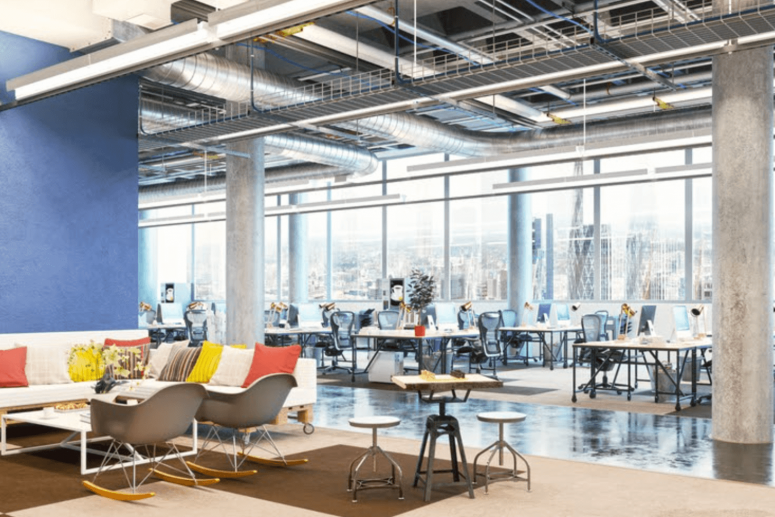
Designed to reduce the number of barriers placed between workers, open office spaces are workplaces with an open-plan design. There are no partitions, nor are there any private offices, instead there are various different environments such as kitchens and lounge areas. Workers are usually placed alongside each other, with the entire floor visible to an employee.
The first open-plan office was implemented by Frank Lloyd Wright in 1939, with the aim of increasing productivity. The inclusion of 200 staff members on one floor was accompanied by warmer lighting, a sound absorbing ceiling, and congregation spaces. Whilst the designs of open-plan workplaces have changed dramatically since the 30’s, it’s purpose still remains the same. To create a more collaborative and social office environment.
The Advantages of open office space
A lack of cubicles immediately opens up room for communication between team members across the office space. If each employee was granted their own private office, there would be a substantial sense of isolation between them and their co-workers. Once these barriers are taken down, conversation becomes much more accessible. This can improve the relationship between colleagues and make for a happier work environment.
Many companies introduce open-office spaces in order to appear more forward-thinking, or even modern. These workplaces prioritise their employees, by creating a variety of spaces for relaxation and for different modes of working. They are built for inclusivity. These types of offices are also less costly for the business. The depletion of cubicles reduces the investment needed towards an office design, communal spaces result in company resources being shared, and utility bills are significantly lowered.
The Disadvantages of open office space
Despite the positive aims of open-office spaces, these environments can have their pitfalls.
Noise is a huge aspect of open-office workplaces, and can actually reduce productivity for workers. With a vast amount of distractions, some employees struggle to concentrate and complete their daily tasks. It was reported that 80% of workers specified noise as a top distraction in an office space.
A lack of privacy can also cause issues within the workplace. Introverts may regress in an open-office, with a feeling of intimidation caused by constantly being “on display.” Many employees don’t feel as productive in the company of an office manager, as the pressure of appearing busy can create a stressful environment.
Open-office workspaces are also rife for the spread of viruses. Similar to schools during flu season, the lack of barriers between employees can easily spread any cold or fevers. With the majority of staff off sick, productivity grinds to a halt and can affect company progress.
Does open office space work?
So, do open-office spaces actually work? Well, yes…and no. The success of an open-office workplace relies heavily on the employees themselves, whether they can thrive in that kind of environment. Whilst the pros do seem to outweigh the cons, the downsides must still be taken into consideration.
With 49% of employees in the UK working in an open-plan office, businesses have taken on board the advantages of these surroundings and attempted to increase productivity. Keeping an eye on your employees is key to a happy workplace and taking their thoughts and opinions into account can result in a thriving work environment. For more information on our open-offices spaces, visit our website here or feel free to contact us with any queries. If you’re a small to medium business looking for office space to rent in Nottingham, the Oldknows Factory have you covered.
